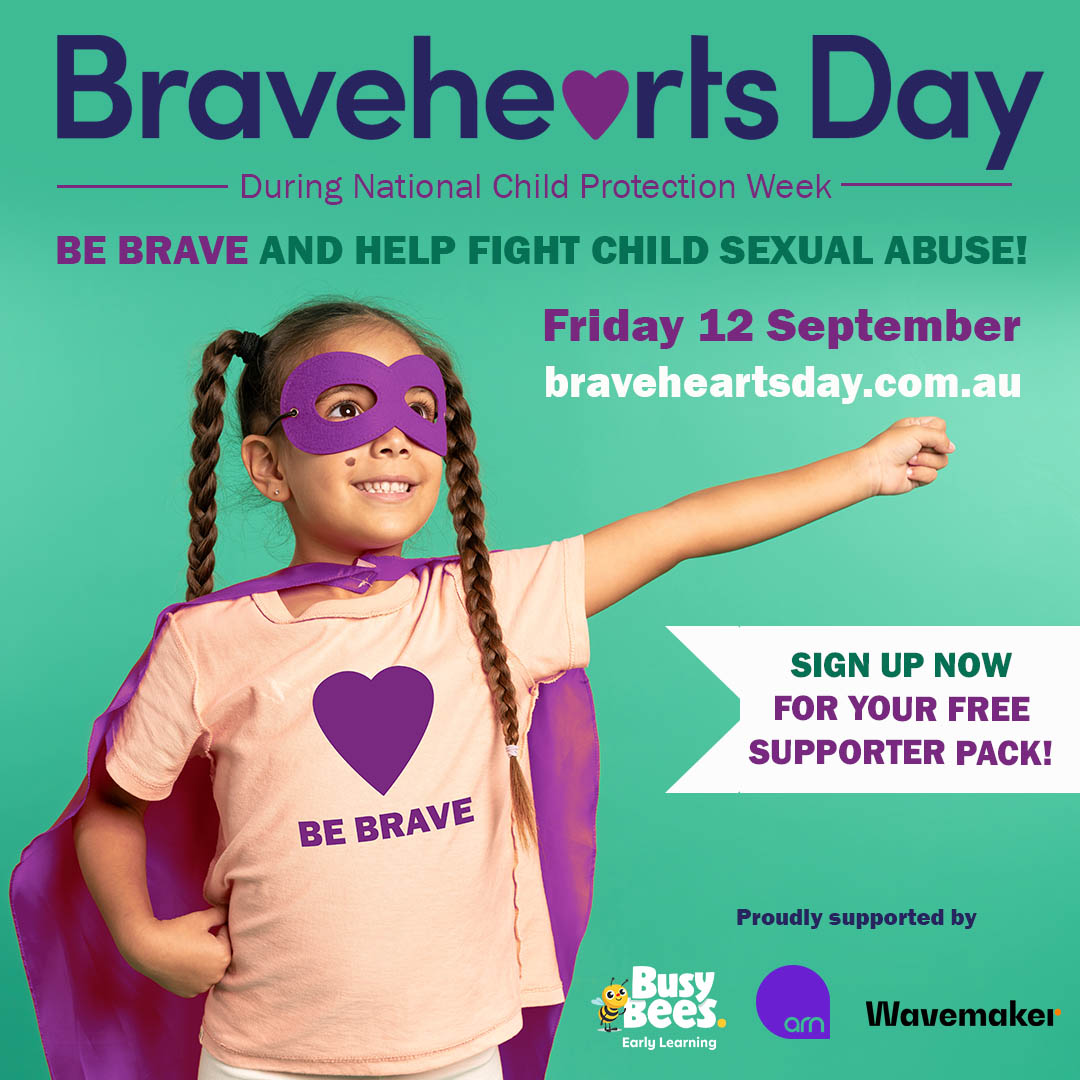Research + Reform
-
Stats & Facts
- Prevalence of child sexual abuse
- Nature of child sexual abuse: risk factors & dynamics
- Disclosure of child sexual abuse
- Harmful sexual behaviours (incl. peer-instigated abuse)
- Child sex offenders
- Convicting, treating & managing child sex offenders
- Child sexual abuse & religious organisations
- The impact of child sexual abuse
- The cost of child sexual abuse
- Child sexual abuse: prevention & education
- Community views on child sexual abuse
- Online risks, child exploitation & grooming
- Research
- Reform & Submissions
Helpful Links
- Home > Research + Reform > Stats & Facts > Child sexual abuse & religious organisations
Child sexual abuse & religious organisations
The Australian Child Maltreatment study found that one in 250 participants experienced child sexual abuse (0.4 %) by a leader or another adult in a religious organization during childhood in Australia… In France, Bajos et al. (2023) found 1.28 % of men and 0.34 % of women had experienced contact child sexual abuse by Catholic Church members. In the Netherlands, Langeland et al. (2015) found 1.7 % of people aged 40 and over (2.7 % of men and 1.7 % of women) had experienced contact child sexual abuse within the Dutch Roman Catholic Church (Hunt et.al., 2024).
Child sexual abuse in religious organizations was overwhelmingly perpetrated by male religious leaders, compared to other male adults or female leaders or other adults (Hunt et.al., 2024).
More than two-thirds of instances of people who reported child sexual abuse in religious organizations said this occurred in Catholic organizations. This is consistent with Australia historically having high levels of Catholic observance, teamed with a high proportion of Catholic organizations providing educational, health, and social services… However, it is also consistent with a substantial body of scholarship identifying factors specific to the Catholic Church at organizational, cultural, doctrinal and individual levels that have contributed so powerfully to the disproportionate onset and continuance of child sexual abuse in these organizations, in contrast with others (Hunt et.al., 2024).
In relation to victimisation, prevalence of child sexual abuse by perpetrators in religious organizations was significantly higher for men (0.8 %) than for women (0.1 %). This is a reverse of the typical two to three times higher prevalence in girls compared to boys for sexual abuse by all perpetrators combined (Hunt et.al., 2024).
A study comparing Roman Catholic Church-related child sexual abuse prevalence and characteristics to abuse in other social spheres in France since 1950 found that while family was the most common sphere of perpetration, the church was the next most common. Child sexual abuse in the church was more common among men than women, while the opposite was true for other social settings (Bajos, Ancian, Tricou, Valendru, Pousson, & Moreau, 2022).
The Royal Commission into Institutional Responses to Child Sexual Abuse found that no case of child sexual abuse within the Christian Congregations of Jehovah’s Witnesses (out of 1006 cases since 1950) was reported to secular authorities by the congregational authorities, even though in more than 50% of cases, the accused had confessed to committing sexual abuse (RCA, 2016, cited in Rashid & Barron, 2022).
A study examining the personnel files of more than 38,000 Catholic Priests and clergy within the German Catholic Church across the period 1946 – 2014 found that 4.4% of all clerics were alleged to have committed sexual abuse, and 3,677 children or adolescents were identified as victims (Dressing, Dolling, Herman, et al., 2021). More than 80% of victims in the German sample suffered contact abuse. The seriousness of the offences as compared to the US John Jay study appeared even more severe, with 25.7% of offences involving penile penetration or attempt (Dressing, et al., 2021).
Raine and Kent (2019) discuss the unique characteristics of grooming in religious settings, noting that alongside typical grooming characteristics such as desensitisation to increasingly sexualised activity, exposure to illicit material and substances, establishment of friendships with families, inducements and coercion, a cluster of unique religious attributes exist, including “obedience, patriarchy, claims of divine justification, appeals to God and salvational outcomes, the use of familial language, and closed communities”.
While the majority of research on child sexual abuse in religious organisations has focused on the Catholic Church, Denney and colleagues (2018) conducted a study examining characteristics of abuse cases occurring in Protestant church congregations across the United States. This study found that the majority of cases (98%) involved male perpetrators, and that the majority of offences were contact offences that occurred on church premises or at the offender’s home. Additionally, most offenders were found to be white pastors or youth ministers who were approximately 40 years in age (Denney, Kerley & Gross, 2018).
As of 31 May 2017, the Royal Commission into Institutional Responses to Child Sexual Abuse had heard from 6,875 survivors in private sessions, of whom 4,029 (58.6%) reported child sexual abuse in religious institutions. Of these, 2,489 survivors (61.8%) told of child sexual abuse in Catholic institutions, and 594 of abuse in Anglican institutions (14.7%). The majority of survivors were male and the average age at first time of abuse was 10.3 years. The most common religious contexts in which alleged abuse occurred were religious schools (39%), religious institutions such as orphanages, children’s homes and missions (35.2%), and places of worship (24.8%). Survivors took, on average, 23.9 years to tell someone they had been sexually abused (Royal Commission into Institutional Responses to Child Sexual Abuse, 2017a).
The Royal Commission into Institutional Responses to Child Sexual Abuse heard from survivors about many barriers to disclosure that are particular to abuse within religious organisations. These barriers included fears of disclosing to devoutly religious families or because of attitudes to sex and sexuality in their religious community, fears of being ostracised, and reluctance to “bring shame” on the religious organisation. Grooming and psychological manipulation on behalf of the perpetrator was common, as well as institutional barriers to disclosure including cultures of secrecy and abuse, inappropriate responses to children who did disclose, and inadequate avenues for disclosure. Additionally, the status and authority of people in religious ministry prevented many victims from disclosing about their experiences of sexual abuse (Royal Commission into Institutional Responses to Child Sexual Abuse, 2017a).
A report analysing claims of sexual abuse made with respect to Catholic Church institutions in Australia was released by The Royal Commission into Institutional Responses to Child Sexual Abuse in 2017. This report identified 1,880 alleged perpetrators along with 4,444 victims who came forward to report an incident within the Catholic Church between 1980 and 2015. Ninety per cent of the alleged offenders were men — with the highest number acting as religious brothers, followed by priests and lay people associated with the Church. Victims were an average age of 10.5 for girls and 11.6 for boys, with an average 33 years between the alleged abuse and official complaint (Royal Commission into Institutional Responses to Child Sexual Abuse, 2017b).
The analysis of sexual abuse claims relating to the Catholic Church compiled data from a survey of 75 Catholic Church authorities — with priest members — and 10 Catholic orders whose members are religious brothers and sisters. It classed 7% of priests over that period of time as alleged perpetrators of sexual abuse. The St John of God Brothers had the highest proportion of religious brothers who were classed as alleged perpetrators (40.4%) followed by Christian Brothers (22%), Salesians of Don Bosco (21.9%) and Marist Brothers (20.4%). The highest proportion of alleged perpetrators who were Catholic priests came from the Benedictine Community of New Norcia (21.5%) along with the Salesians of Don Bosco (17.2%) and Marist Fathers (13.9%) (Royal Commission into Institutional Responses to Child Sexual Abuse, 2017b).
A report analysing claims of sexual abuse made with respect to Anglican Church institutions in Australia was also released by The Royal Commission into Institutional Responses to Child Sexual Abuse in 2017. This report identified 569 alleged perpetrators along with 1,085 victims who came forward to report an incident within the Anglican Church between 1980 and 2015. Of all alleged perpetrators, 94% were male, 247 were ordained clergy (43% of all known alleged perpetrators), and 285 were lay people (50% of all known alleged perpetrators). Victims were an average age of approximately 11 years and this did not vary for the gender of the complainant. The average time between the first alleged incident date and the date the complaint was received was 29 years (Royal Commission into Institutional Responses to Child Sexual Abuse, 2017c).
References
Bajos, N., Ancian, J., Tricou, J., Valendru, A., Pousson, J., & Moreau, C. (2022). Child sexual abuse in the Roman Catholic church in France: Prevalence and comparison with other social spheres. Journal of Interpersonal Violence, DOI: 10.11777/08862605221124263.
Denney, A.S., Kerley, K.R., & Gross, N.G. (2018). Child sexual abuse in Protestant Christian congregations: A descriptive analysis of offense and offender characteristics. Religions, 9(1), 27.
Dressing, H., Dolling, D., Hermann, D., Kruse, A., Schmitt, E., Bannenberg, B., et al. (2021). Child sexual abuse by Catholic Priests, Deacons and male members of the religious orders in the authority of the German Bishops’ Conference 1946-2014. Sexual Abuse, 33(3), 274-294.
Hunt, G.R., Mathews, B., Higgins, D.J., Finkelhor, D., Willis, M.L., Haslam, D.M., Lawrence, D., Meinck, F., Thomas, H.J., Malacova, E., Pacella. R.E., & Scott, J.G. (2024). The prevalence of child sexual abuse perpetrated by leaders or other adults in religious organizations in Australia. Child Abuse and Neglect, 155, doi: 10.1016/j.chiabu.2024.106946
Raine, S., & Kent, S.A. (2019). The grooming of children for sexual abuse in religious settings: Unique characteristics and select case studies. Aggression and Violent Behavior, 48, 180-189.
Rashid, F., & Barron, I. (2022). Jehovah’s witnesses response to child sexual abuse: a critique of organisational behaviour and management policies (1989–2020). Journal of Sexual Aggression, DOI: 10.1080/13552600.2021.2018513
Royal Commission into Institutional Responses to Child Sexual Abuse (2017a). Final report, Volume 16: Religious Institutions. Sydney: Commonwealth of Australia.
Royal Commission into Institutional Responses to Child Sexual Abuse (2017b). Analysis of claims of child sexual abuse made with respect to Catholic Church institutions in Australia. Sydney: Commonwealth of Australia.
Royal Commission into Institutional Responses to Child Sexual Abuse (2017c). Analysis of claims of child sexual abuse received by Anglican Church Dioceses in Australia. Sydney: Commonwealth of Australia.
 BACK
BACK

